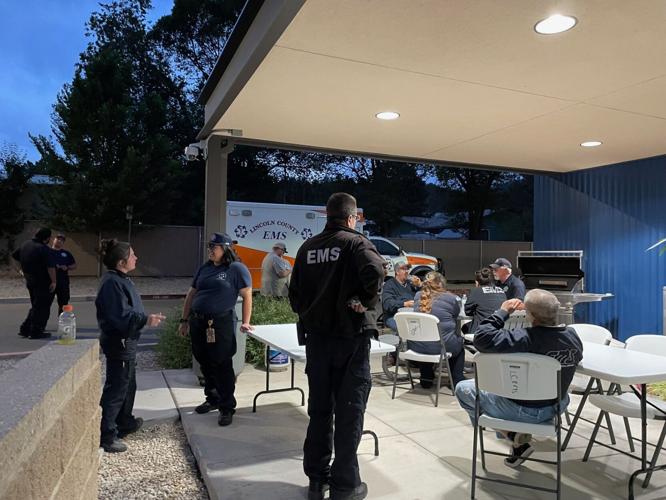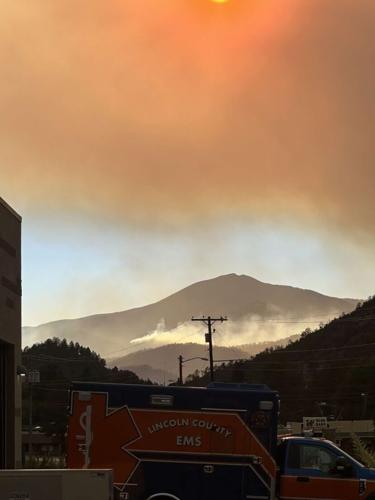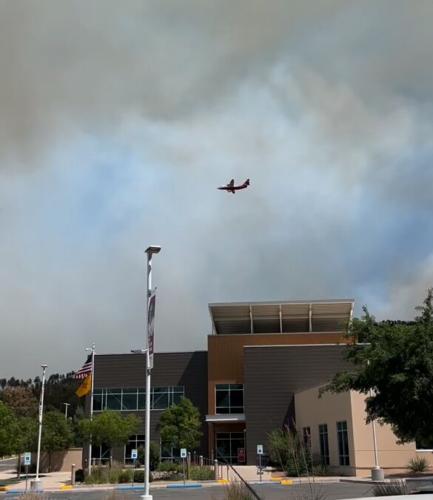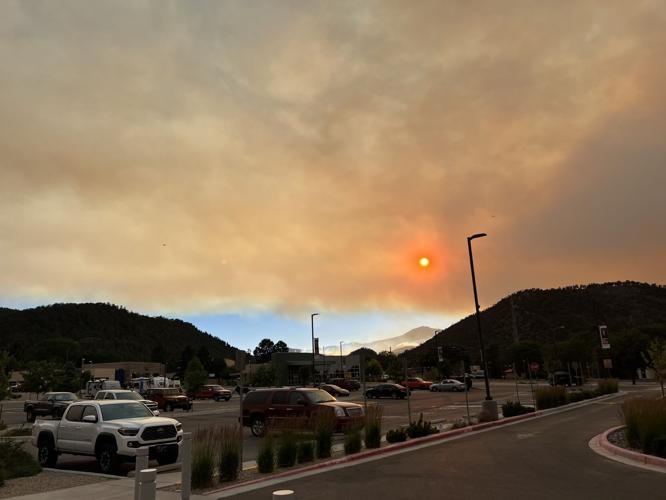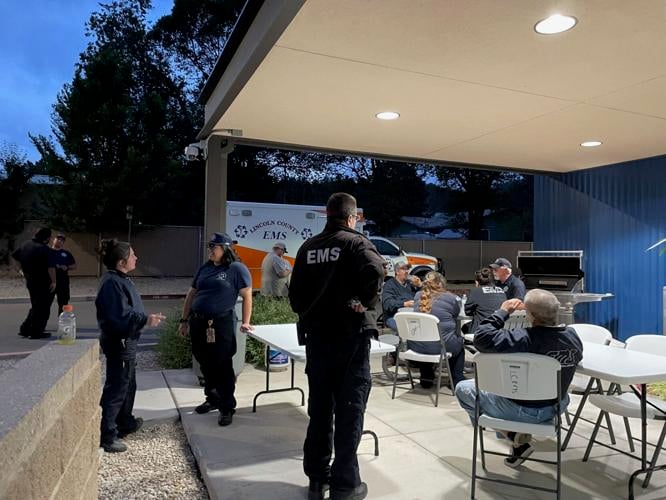Ruidoso’s Lincoln County Medical Center now has satellite radios and three Starlink internet dishes.
Hospital administrator Todd Oberheu said the technology is a new addition since the South Fork and Salt fires ignited earlier this month, twin disasters that took out internet and cell phone services in the area.
The hospital’s emergency medical services division plans to upgrade to dual-band radios so crews can talk through their handheld devices as well as listen — rather than having to rely on vehicle radios, said Sandralynn Nunnally, manager of the hospital’s EMS operations.
Lincoln County Memorial’s staff has been through the wringer in the last two weeks — clearing out patients from its 25-bed facility the day the fires threatened the town; closing the hospital completely while maintaining emergency medical services; then reopening as the blazes continued to spread. Many staff members also had their own homes and family members to worry about through the crisis, which led to the complete evacuation of Ruidoso and much of the surrounding area.
But one of the most challenging issues, Oberheu and Nunnally said, was keeping in touch without cell phones or internet.
“Communication was the hardest part,” said Nunnally. “In the first two days, it was very difficult.”
In those harrowing first two days of the fire — which has claimed two lives and hundreds of homes in the Ruidoso area — Oberheu and his chief nurse had to go in person to incident command to get updates.
He had to drive about 15 miles out of Ruidoso Downs to get a cell signal.
“We were completely in the dark here locally,” Oberheu said.
The situation improved drastically mid-week, when the hospital got two Starlink systems it purchased, and Gov. Michelle Lujan Grisham’s office provided a third, he said.
“That really brought us right back online,” Nunnally said. It works really well. I mean, our computer system here at work, it was like it was normal.”
Still, it was a week of curveballs for the facility, owned by Presbyterian Healthcare Services.
On June 17, as the fires whipped up in size and strength, hospital leaders worked to discharge some patients and ship others to Eastern New Mexico Medical Center in Roswell, though one pregnant patient couldn’t delay any longer and gave birth.
“To my knowledge and what I’ve been told ... it was a perfectly normal delivery,” Oberheu said.
While the hospital sent away its staff the next night, Oberheu said leaders were back at the facility the next morning, trying to figure out how to get it back online as soon as possible. The emergency department quietly reopened on June 20; through the weekend, it offered emergency room services to firefighters, other first responders and community members who stayed behind before fully reopening the following Monday when evacuations were lifted.
Hospital staff members also had to deal with their own evacuations. Oberheu has one son living in Las Cruces while he attends New Mexico State University, and his wife and other son were out of town when the fires broke out. That left just his 92-year-old mother who lives with him at home, he said.
The afternoon the fire started, he “left the facility and headed home to get her situated and brought here so that if I did have to evacuate she would be ready,” Oberheu said.
Later, his son in Las Cruces came and picked up Oberheu’s mother.
Oberheu said his own house was spared in the fire, but that’s not true of all his team. Ten employees lost their homes completely or their homes suffered severe damage by either fire or flood.
The issue now is how to make sure those employees can do their jobs while also making sure they can address their own challenges, he said.
Two employees who lost their home are married to each other and both work in the emergency medical services department, Nunnally said.
Many locals evacuated to shelters in Roswell or went to stay with friends and family. But Nunnally said she sent an EMS team to a Red Cross shelter in Capitan, which at first didn’t have a medical team.
One challenge was helping care for people who hadn’t brought their prescriptions with them or who ran out. Oberheu said EMS workers made multiple trips to Roswell or Alamogordo to pick up medications for those people. One ambulance team went on a medication run to Alamogordo and found the pharmacy couldn’t take a credit card payment over the phone, he said.
“I called the CEO at the hospital at Alamogordo [Jim Heckert of Gerald Champion Regional Medical Center] and said, ‘Hey, Jim, can you run over to the pharmacy and go pay for these?” Oberheu said, adding Heckert jumped in his car and ran down to help.
Another challenge for the hospital’s EMS crew was that, despite the mandatory evacuations, a number of people stayed in their homes — some of whom ended up needing to call 911 for help.
“I don’t know the numbers,” Nunnally said. “But there was a fair amount.”
Nunnally said her crew responded to lots of calls for oxygen from people who weren’t able to get their oxygen tanks refilled. But others needed to be hospitalized, which took crews out of commission for long amounts of time.
“Whenever we had those 911s from the people that didn’t leave town, we’d have to go 75 miles away to get them to the hospital, and then [the crews] would come back,” she said.
Oberheu and Nunnally both said they were proud of their staffs throughout the crisis. Some EMS workers slept at the station on the hospital grounds, while others lived close enough to go home — but all showed up, Nunnally said, and worked long hours.
Through the first week, the EMS crews got together at the station each night to cook and share a meal together and unwind from the stress of the day. They all came, Nunnally said — even the couple who lost their home.
“It was neat to see everybody come,” she said, adding the meals took on a community barbecue feel. “People were playing games. They just were having their outlet. ... It was nice to see them laugh.”


